The Strange Case of the Obfuscated(?) Zelda ROM
Yesterday, there was a huge leak of Nintendo assets. Particularly, source code and prototypes have been leaked for a huge number of games. These include source code for Star Fox, Star Fox 2, Yoshi’s Island, Mario Kart, and more recently some N64 games including Super Mario 64 and Ocarina of Time, and more…
But, of particular interest to me, is source code and prototype leaks of Link’s Awakening DX.
I have mixed feelings about this. This already happened to the first 4 generations of Pokemon games; they had their source code leaked some time ago. I mused in an earlier post that I hope such a thing never happens to the Zelda Oracle games, because of my work on my oracles-disasm project. I don’t want there to be a chance of the project being contaminated with information stolen from Nintendo’s (or Capcom’s in this case) actual source code.
I have similar feelings about Link’s Awakening, since I’ve made some contributions to the LADX disassembly, though I’m not a main contributor. As such I won’t be looking at the leaked source code, and I really hope the LADX disassembly can continue in a relatively “clean” way.
On the other hand… even if I’m not looking at the source code, there are some interesting prototype ROMs circulating around of the early development of Link’s Awakening DX. Do I have a moral problem looking at these in the same way as looking the source code? …If I do, it’s not as strong as my curiosity in this case. I’m sorry, Nintendo. I am weak to this.
The dmzel series
There are a large number of ROMs, but so far I’ve been focusing the “dmzel” series. There are 5 files: “dmzel”, and then “dmzel2” up to “dmzel5”.
Before getting first-hand access, I saw speedrunner NitrozSR do a speedrun of dmzel5. It looks almost exactly like the original black&white release v1.1; DX-exclusive features such as the color dungeon have not been added yet, and it seems to have all the same glitches - even the speedrun’s Arbitrary Code Execution setup made specifically for the OG black&white version works! The only difference is… there’s color.
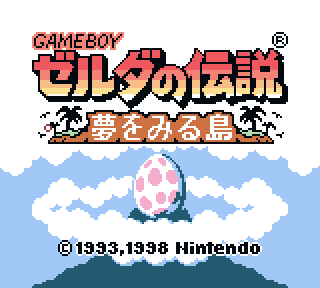
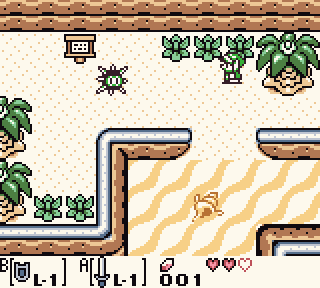
I think it’s rather nice to look at! Of course, not all screens look as nice, as it’s clearly not complete. There also don’t seem to be very many graphical changes, such as the changes made to grass in the DX version. Also, certain effects are missing, such as any “flashing” palettes including Link taking damage or sword charging.
It’s pretty stable, aside from one problem where saving & quitting resets the game to think it’s in monochrome mode, which obviously breaks the color palettes. RAM address “DD00” is set to “1” when running on a GBC, but this gets reset to 0 upon saving & quitting, causing the breakage.
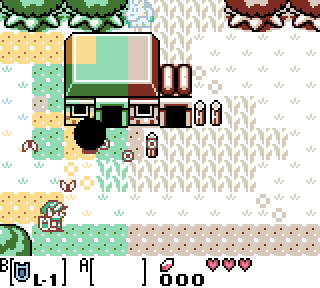
dmzel2-4 are similar. I haven’t looked too deeply into them, but they seem to just be earlier versions of dmzel5; for example, dmzel2 and dmzel3 don’t display the menu cursor correctly. And, curiously, you start with the Tail Key in dmzel2 through dmzel4.
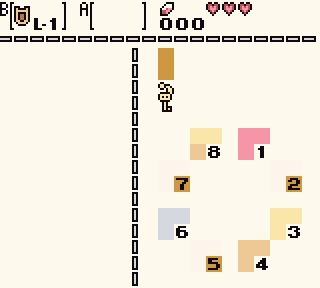
dmzel2 has a timestamp of 9 days before dmzel5. I could believe that timeline, but their timestamps are all in July 1998, placing this less than 6 months before the final release of Link’s Awakening DX. I guess that’s possible? It seems a bit fast to me, but then again, the DX version was simply an update, not a new game.
There is just one problem with dmzel2 through dmzel5: they don’t work on accurate emulators; only on inaccurate emulators such as VBA. This is because of a problem with their headers. Each Gameboy ROM contains a header which specifies what hardware they are meant to run on. In particular, each cartridge contains hardware called the “Memory Bank Controller” (MBC), which controls the way in which the cartridge interfaces with the gameboy.
The ROMs state that they use MBC1:

This is peculiar. While it’s normal for monochrome Gameboy games to use MBC1, supposedly, all Gameboy Color games are supposed to use the newer MBC5, at least if they use the Gameboy Color’s double-speed mode. Apparently MBC1 wasn’t designed for the higher clock rate, although I’m unsure if this was a problem in practice.
Anyway, the point is - the header is lying. It should be using MBC5, not MBC1. Changing address 0x147 in the ROM from value 0x03 to value 0x1b fixes the issue. Since MBC5 is backwards compatible with MBC1, it may be the case that VBA and other emulators are simply emulating MBC5 all the time, which is why it works on those emulators.
Of course, the header is only an indicator of the underlying hardware in use. If Nintendo’s debugging hardware used an MBC5, they wouldn’t have noticed if they simply forgot to update the ROM header with that information - it is only of any benefit to emulators. This might be the reason why the MBC field in the header is incorrect. (Although I’m unsure how Nintendo’s official emulator handled this. It was apparently part of the leak, but I’d rather not touch sketchy EXE files…)
dmzel1
This is where things get weird.
There is a file named “dmzel”. I will refer to it as “dmzel1” so as not to confuse it with others in the series.
dmzel1 appears at first glance to be just another Gameboy ROM file. But it doesn’t work at all. Upon closer inspection, something is very strange: the ROM is 4 megabytes large. All the others are only 1 megabyte large, just like the final release!
So I took a closer look. Naturally, I found a gameboy header around address 0x100, easily identfiable by the game’s title “ZELDA”:

And again at address 0x4100, which was positively strange:

And after that it re-occurs at intervals of 0x10000 bytes…


At this point I’m screaming at my monitor “Why are there 65 Gameboy headers in a single file!?!?” And why is each one spaced exactly 0x10000 bytes apart, with the exception of the one at 0x4000?
My initial conclusion was that, for some reason, the beginning of 65 partial ROMs were concatenated into a single file. But this wasn’t quite correct.
While investigating, I split the file into 64 segments of 0x10000 bytes each, such that each segment started with one of the gameboy headers. What I found was that, when I did a binary diff on any 2 segments, there were mostly identical… except for addresses 0x4000-0x7fff, which were always radically different.
I won’t get into too much detail, but, a segment of size 0x4000 - such as addresses 0x4000-0x7fff - corresponds to a single “bank” of data in a normal Gameboy ROM. It can be thought of as the unit into which all Gameboy ROMs are divided into. When I observed each of the 64 segments, I found that each corresponded closely to a specific “bank” in the “dmzel2” ROM (I assumed this would be the most closely related ROM). And indeed, the first segment - and only the first segment - contained a Gameboy Header (the one at address 0x4000 in the original dmzel ROM).
Let’s recap. There are 64 segments of size 0x10000 each. Each segment contains a single unique bank of size 0x4000. The first segment contains a header. 64 banks of size 0x4000 adds up to… 1 megabyte? The expected size for a ROM?
So… I guess I should… concatenate them together??????
This produced a working ROM. Just need to apply the MBC fix like the other dmzel files, and…
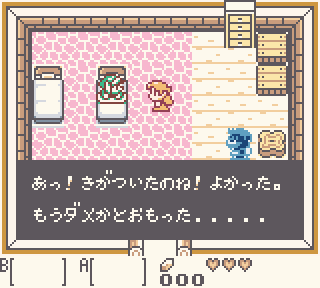
In any case, dmzel1 seems to be what it says on the tin: an even earlier prototype in the “dmzel” series. It is dated 5 days before dmzel2, which I find believable. It seems that they haven’t even attempted to color the majority of sprites yet (as seen with Tarin), and attempting to Save&Quit actually crashes the game. Although the game does save before crashing, so that’s good.
Futher investigation into the “extra” data
I have absolutely no idea why the ROM was stored in this way. In a nutshell, if you remove 3/4ths of the data in the original “dmzel” file, you get a working ROM. But the remaining 3/4ths of the file seem to serve no purpose at all. I looked into it further, and didn’t find any answers as to why it may be stored in this way, but I noticed a few things.
For each segment of size 0x10000 in the “dmzel” file, the first 0x4000 bytes are identical. That is, bytes 0x0000-0x3fff, 0x10000-0x13fff, 0x20000-0x23fff, etc. are all identical. This also corresponds exactly to bank 0 of the extracted, working ROM (bytes 0x4000-0x7fff of dmzel1).
The bytes from offsets 0x4000-0x7fff (ie. 0x14000-0x17fff, 0x24000-0x27fff) all differ from each other, as explained above; they form the working ROM when concatenated together.
Bytes from offset 0x8000-0xbfff are similarly identical to one another. They appear to correspond to offsets 0x30000-0x33fff in the extracted ROM (bank 0x0c). However, compared to the extracted ROM, they are not identical. Luckily, these consist of graphics, so we can see the difference. It seems like the graphics have just been shuffled around a bit, not really changed in a significant way.
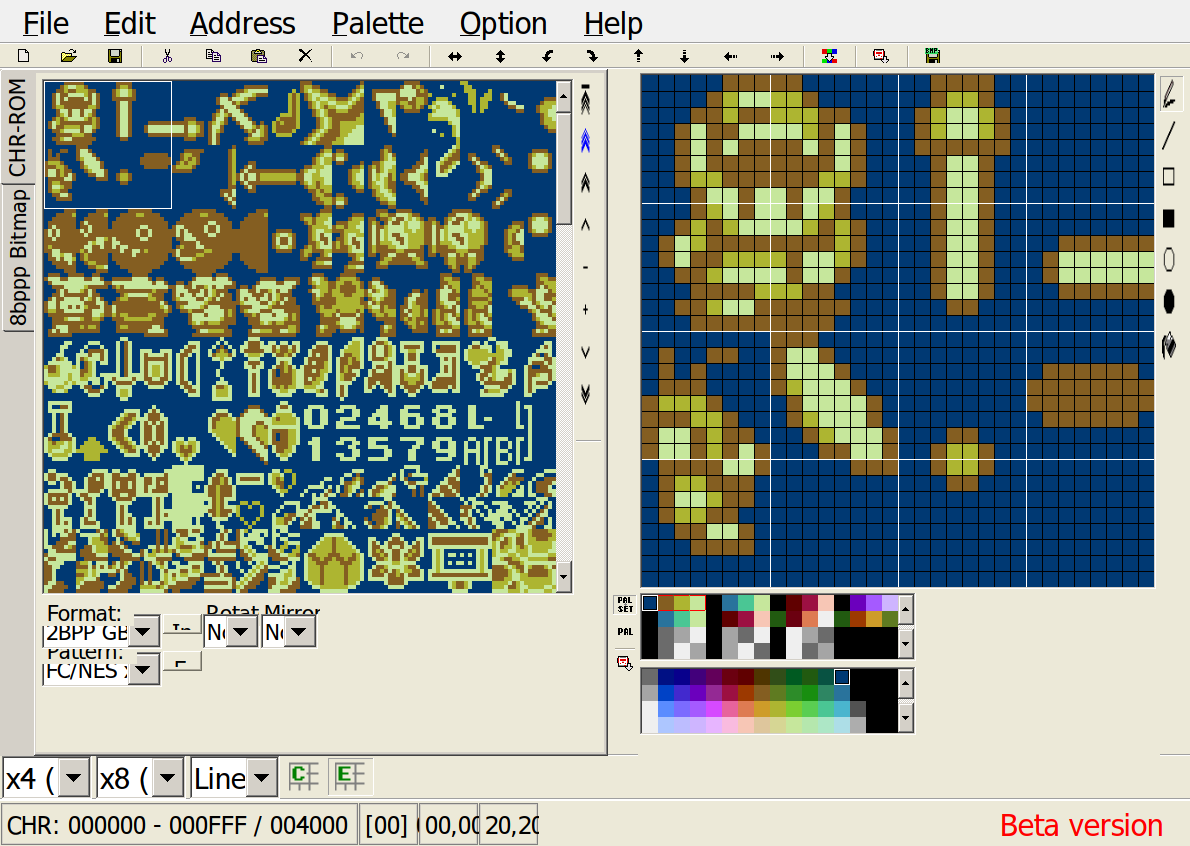
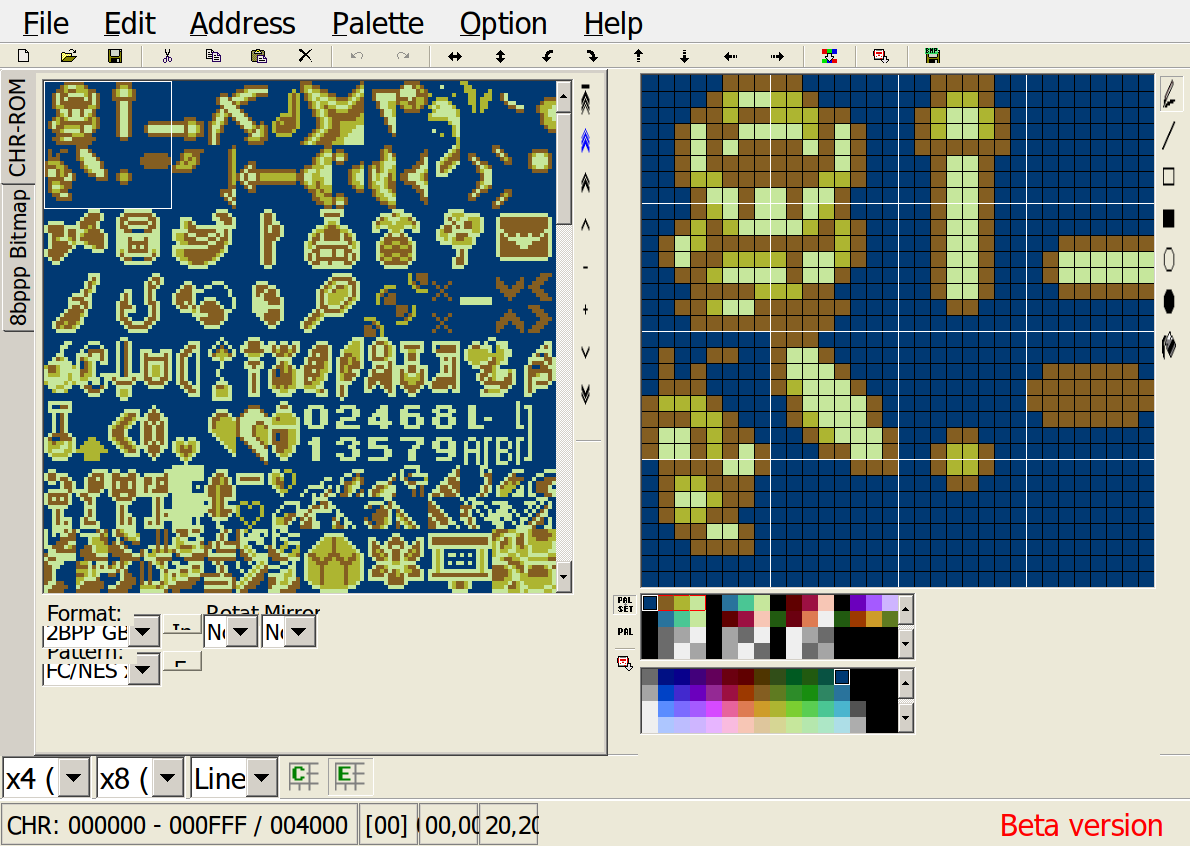
Lastly, there are the offsets between 0xc000 and 0xffff. This data appears to differ in each segment, but only in a few bytes at the end. Also, if you split it into two halves (compare 0xc000-0xdfff with 0xe000-0xffff) it seems that the majority of the data is repeated between them.
There was only one part of the data I could comprehend, which was this:

A rather striking pattern - it’s a room layout. If “FF” is considered to mean “out of bounds”, then the dimensions become 10x8, which fits a room’s dimensions perfectly. So I drew this layout in LALE, and found that it was the entrance to Dungeon 3. Assuming I copied it correctly, it appears to correspond exactly to the black & white version’s layout. (The DX version has 2 different grass tiles.)
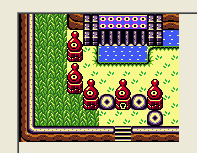
This seems to be the only room layout in there, or at least the only one stored in such an obvious way. In total, it is repeated 128 times in the dmzel1 file (twice in each of the 64 segments). Why the dungeon 3 entrance? Beats me!
Ultimately I’m still completely baffled as to why this file is arranged in the way it is. Offsets 0x0000-0x3fff and 0x8000-0xbfff mostly correspond to data that can be found in the functional ROM. Offsets 0xc000-0xffff do not, at all. (Room layouts are not normally stored in such an obvious way). There may still be interesting data in this latter segment, but I’m not sure how to interpret any of it. (If I had to guess, perhaps it also contains collision and object data for the D3 entrance screen.)
There is another file like this. It is called “zel1.bin”, and it’s dated even before “dmzel”. But, even stranger, it is 2.1 megabytes large. I haven’t been able to get it to run…
Hashes
There were a number of duplicate “dmzel” files. I think they were all the same, but here are the MD5 hashes, just to be safe. (MBC fix not applied to any of these.)
65f2bb47a3da496b25f26f601823fc83 dmzel
993737f05c0ad5c106079121c61e467f dmzel2
1174bd8ecfd6ff22e01fa754708b1e77 dmzel3
da559597564df006edb68bf68a586a1a dmzel4
1672e1168be72a0483e6b11ff717e542 dmzel5[.com]
And the working ROM extracted from dmzel:
7afd2ead1b7b6abf6340442a5fc59390 dmzel-extracted.gbc